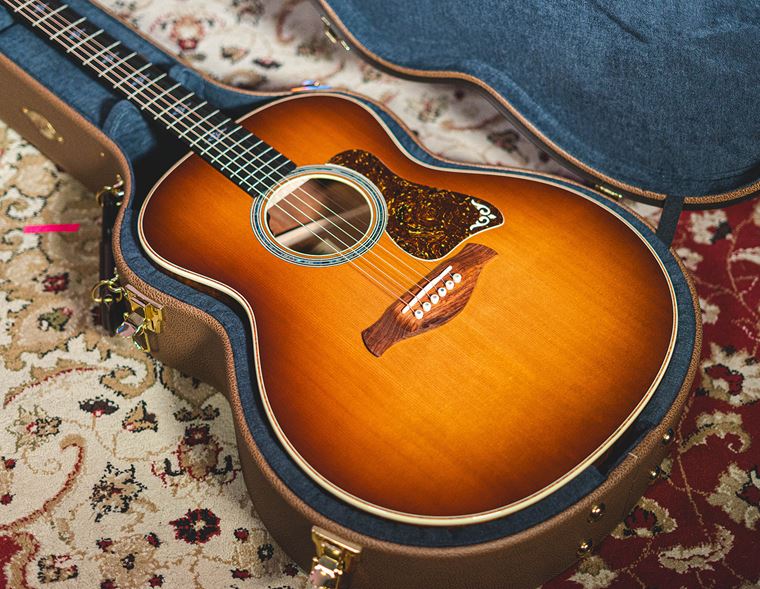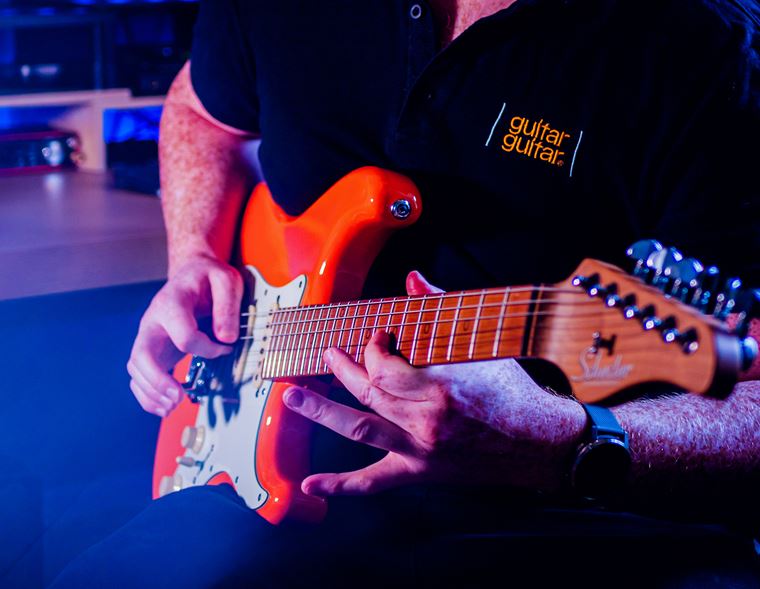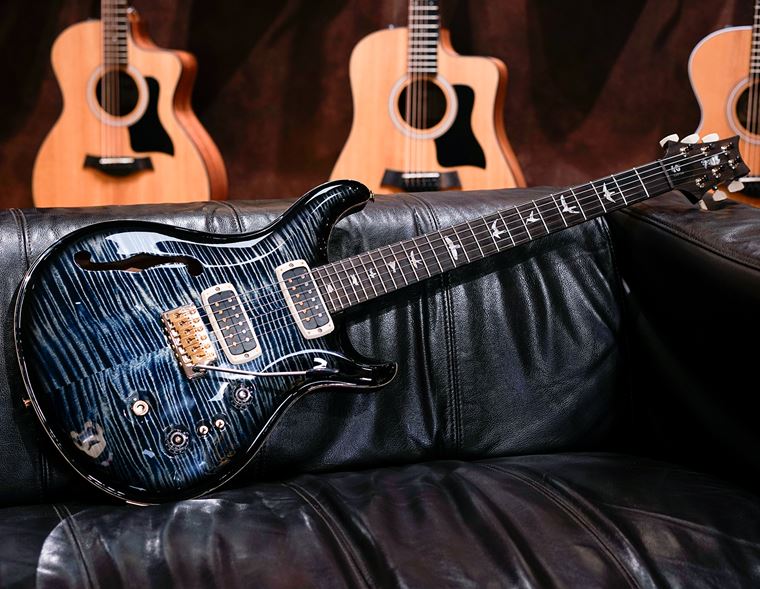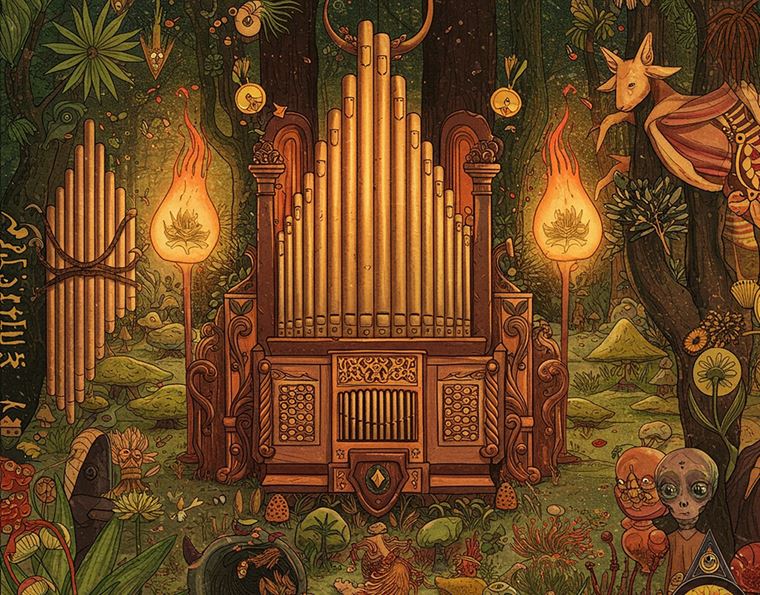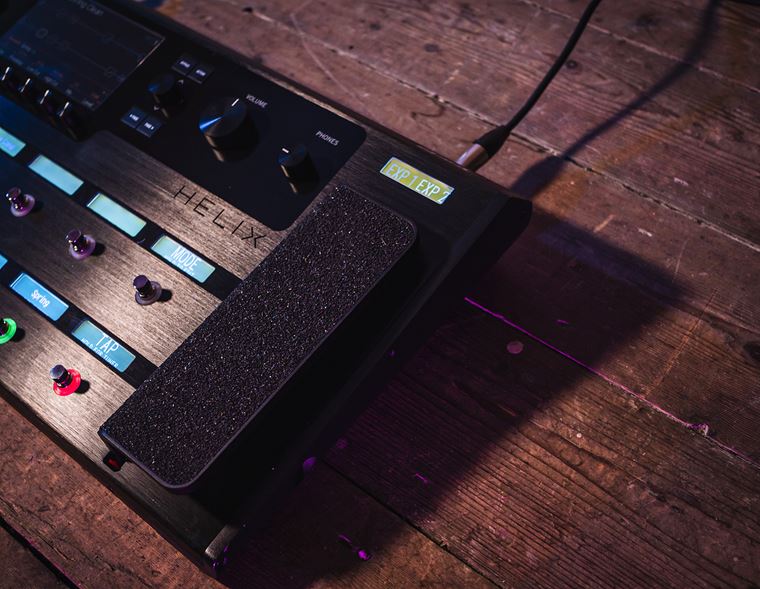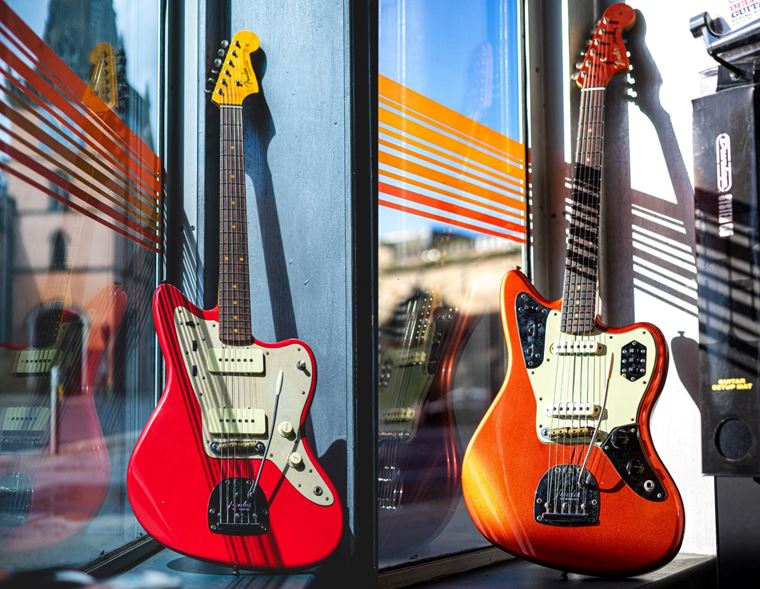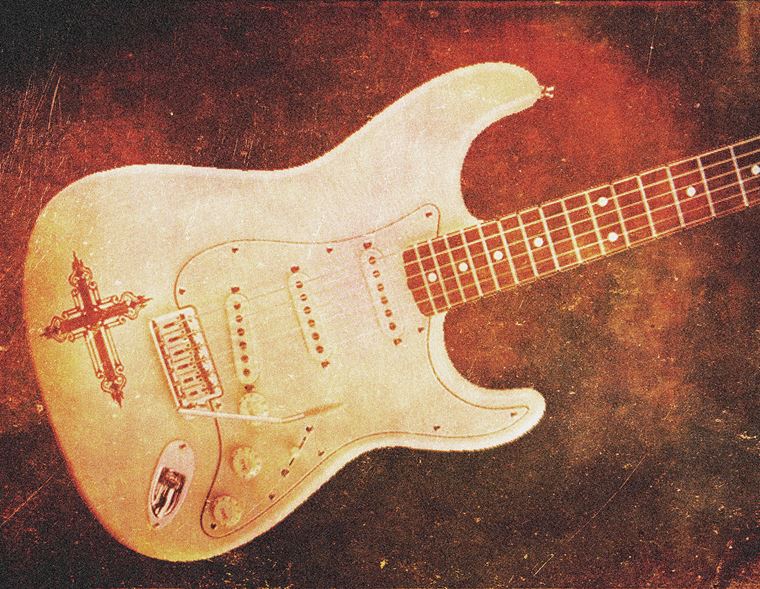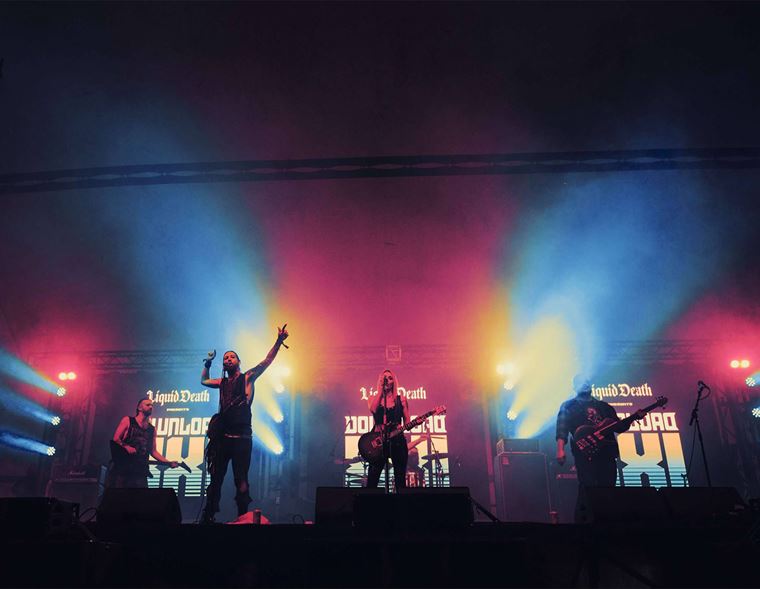13 Most Legendary And Famous Blues Artists of All Time
The music of the devil?
Blues has been defined in many different ways but the reference to the devil is one constant that always features in its definitions.
Legend has it that you're not a real blues musician unless you learned to play the blues from the devil, or sold your soul to him for extraordinary musical talent. But blues was also perceived by clergy as seductive and having destructive and sinful influence on young listeners.
It Gives Me the Blues
Before we dive in to the most legandary and famous blues artists of all time, let’s take a closer look at the blues phenomenon, shall we? Blues takes its name from association with melancholy feelings and despair: when we are feeling sad we have “the blues”. Blues is a musical genre most commonly considered to have originated in the Deep South of the United States in the early 1860s. This was arguably one of the most violent periods in the history of the land with slavery and injustice reaching peak times. Many African Americans were enslaved by cruel masters and forced to work on cotton fields and plantations. The harsh working conditions were the early ground for future blues music. Enslaved men and women often sang old African chants and became known as field hollers. These would later become core elements of blues along with spiritualist hymns and incantations. The blues as we know it today is characterised by groovy, trance-like rhythms, the call-and-response pattern, repetition, the blues scale and the twelve-bar blues chord progression. These all remain the genre’s most recognisable features.
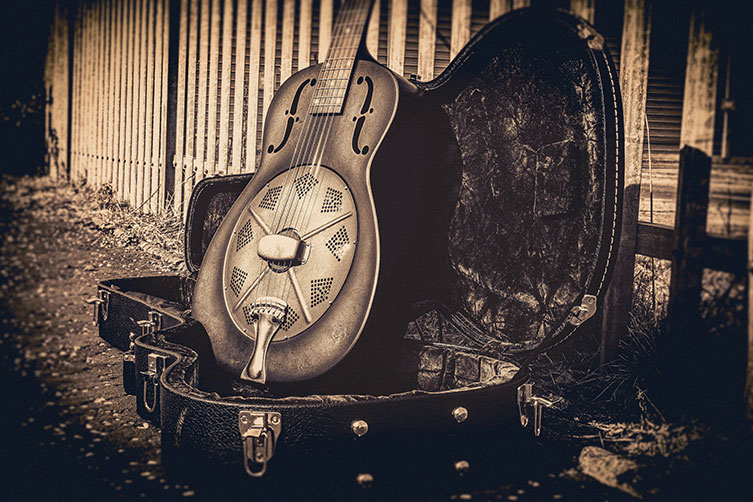
The most popular instruments used in blues are first and foremost human voice and guitar (with lots of string bending and often played with a slide) and lastly a harmonica.
Lyrically, blues takes the form of a loose narrative, serves as a form of expression and is an escapist way of dealing with hardships and taboo topics. Traditionally, a blues song would convey racial discrimination as experienced by African-Americans. Blues singers frequently use melisma and crooning in order to emphasise the sadness, sentiment and harrowing events of their lives. A young school teacher from South Carolina, Charlotte Forten once wrote that blues songs “can’t be sung without a full heart and a troubled spirit” and we couldn’t possibly find a better way to describe it ourselves.
World War II brought about a certain shift in the blues, turning its acoustic form into electric, simultaneously opening the “poor man’s” songs onto a wider audience in bigger cities, particularly Chicago.
We’ll take a look at the early Delta Blues artists, the pioneers who took it out of the country into the city as well as those modern ones who wouldn’t be here today if it wasn’t for the passion of their predecessors.
13. T-Bone Walker
You can tell a man who’s raised on blues by the way he plays guitar. Well, as much as this isn’t an actual saying but rather an observation of our own, T-Bone Walker’s career surely fits this description.
Both his parents were musicians and with family friend Blind Lemon Jefferson often making an appearance at home, T-Bone was saturated with blues since day one. He began his professional career in Dallas in the early 1920s. T-Bone was signed to various record labels throughout his life, with Columbia cutting his debut deal under which he released Trinity River Blues and Wichita Falls Blues. Walker was a pioneer of jump blues (a fusion between jazz, blues and boogie woogie), and is often credited with popularising modern electric guitar blues. He was the first to make the guitar wail and imitated human emotions with intricate phrasing, staccato and acrobatic (for those times) string bending techniques. T-Bone Walker ruled the West Coast blues scene with many performances taking place in Los Angeles rather than Chicago, where most of his predecessors gained fame. His main guitar was Gibson ES-5 (loaded with triple P90 pickups) and he used a Fender Tweed Bassman amplifier.
He has influenced the likes of Stevie Ray Vaughan, Chuck Berry and B.B. King.
12. Ma Rainey
They call her the Mother of the Blues for a reason: Ma Rainey had a majestically low, gravelly voice, mesmerising stage presence and she openly sang about her experiences as an emancipated black woman. She knew her worth both as a human and as a musician.
Rainey signed a recording contract with Paramount Records in 1923 in Chicago. She made over a 100 records in total, including Moonshine Blues, Boo-Weevil Blues and Ma Rainey’s Black Bottom.
A fashion icon of her own times, Ma Rainey braved the most flashy, expensive outfits, diamond tiaras and gold teeth, which all aided her energetic stage persona. Ma’s originality bridged the traditions of theatrical vaudeville and old time Delta blues, resulting in a whole new style of musical performance. It is fair to say that she pioneered that type of blues that appealed to the rural and civic communities.
Ma Rainey has been portrayed in the most recent, Academy-Award winning Netflix film Ma Rainey’s Black Bottom.
2023 came to be the year Ma Rainey was granted a Grammy Lifetime Achievement Award.
11. Samantha Fish
This SG-wielding, hurricane of energy named Samantha Fish needs no introduction to those who keep their hand on the pulse with modern music. Several Independent Blues Awards, Female Blues Artist of the Year, Best Guitarist (2018), a couple of Top Blues Albums at number 1 (Kill Or Be Kind; Faster) and many many more, Samantha is a true force to be reckoned with.
Singer, songwriter and a guitarist extraordinaire, Samantha brings a fresh lease of life to the modern stage. Samantha’s vocal work is captivating and empowering, her guitar riffs catchy and full of groove making her shows an exhibit of self-expression and feel-good energy that is truly contagious. But guitar isn’t the only instrument Fish relies on - she loves to spice her performances up with a good old cigar-box!
Who says old time blues is a thing of the past?
10. Robert Johnson
Johnson was a humble man living on a plantation in Mississippi. He had an insatiable desire to become a blues musician and spend his time playing on the street and in juke joints. He was seemingly notorious for being really bad at guitar playing to the point where he got booed out of a pub for providing a poor performance. Locals claimed he then disappeared and returned a year later with seemingly devilish skills on the instrument: he played better and faster than anybody else.
Robert Johnson’s life is shrouded in myth and mystery. This is mainly due to the fact that his biography is poorly documented and most of it was a work of reconstruction by researchers after his death. This is also because the man’s career became somewhat a legend of its own kind.
To put it simply, the rumour says Johnson sold his soul to the devil. It goes that he took his guitar to a local crossroads at midnight where he met the Adversary. He tuned the guitar and played a few songs for Robert, then handed it back, passing his master skills on the instrument onto Johnson. Another version of the lore says he’d meet the devil at a graveyard and practice guitar under the dark master’s watchful eye.
Whether these are true narratives of the events or not, what we do know about this musician for a fact is that Robert was and still is one of the all-time greatest blues musicians that ever lived.
Sadly his legacy went beyond just the music he played though. Johnson was the first member of what became the infamous 27 club, passing away at a young age after being poisoned.
Robert had a little recognition in his lifetime. He recorded merely 29 songs - yet these came to be the songs that shaped the ground of Delta Blues.
Notable modern day blues and rock guitarists (e.g. Keith Richards, Eric Clapton) quote Johnson as their key influence in their musical careers.
His approach to the guitar was complex and he was way ahead of his times with the techniques he implemented. He’d use bottle neck as a slide and combined chicken-picking with groovy chord playing creating a sound close to that of two guitars playing simultaneously.
The Rock and Roll Hall of Fame pronounced Johnson as “the first ever rockstar” and inducted him in 1986 as an early influence. Also posthumously, he was awarded Grammy for best historical album (1991) and his song Cross Road Blues got into Grammy Hall of Fame 7 years later.
9. Howlin' Wolf
His real name was Chester Arthur Burnett but we all know him by his stage nickname: Howlin’ Wolf. Regarded as one of the most influential blues artists of all time, Howlin’ Wolf’s songwriting shaped the landscape of modern blues music, as well as its cousin genres such as rhythm and blues and rock & roll. He also helped bridge the gap between the rural, acoustic sound of the Delta blues and the more electric, crunchier sound of its Chicago equivalent.
Howlin’ Wolf’s career is a classic ‘rags to riches tale’. He was born into poverty and got kicked out of his mother’s house at an early age. He found his happiness in 1930 when he met a legendary Delta blues player, Charley Patton, who taught him how to play the instrument. Howlin’ Wolf managed to make quite a name for himself in the Deep South before he got drawn into the Army. He moved to Chicago some years later and made his first successful recording at the age of 41. He went on to record several albums between the 1960s and 1970s, toured Europe and made a few TV appearances.
Wolf was known for his growling, booming voice, expressive harmonica licks and of course, electrifying guitar chops. He was known for his love of the Epiphone Casino, a white Fender Stratocaster and hollowbody Coronado but didn’t shy away from more futuristic models like Gibson Firebird.
In 1980, Howlin’ Wolf was posthumously inducted into the Blues Hall of Fame and 11 years later into the Rock and Roll Hall of Fame as an early influence. The legendary Sun Studio founder and producer - Sam Phillips - once said that when he heard Howlin’ Wolf, this for him was “where the soul of a man never dies”.
8. Joe Bonamassa
There’s only one thing that can happen when you tour with B.B. King at the age of 12 - you’re destined to become a legend. And such was the fate for a little boy named Joe Bonamassa. Now a mature and experienced musician, Joe has turned out to be a true virtuoso on the modern blues scene. His catalogue contains a hefty amount of solo albums, out of which nearly every single one of them has hit number 1 on US charts, proving blues is well and truly alive and can easily compete with pop music.
Bonamassa’s obsession with guitars was sparked at a very young age thanks to his parents who owned a music shop in Upstate New York. He continued into their footsteps but with a twist: Bonamassa’s guitar collection is not just a shop but a museum and be sure none of his 6-string babies are for sale! This vault of vintage guitars is an extension to his LA mansion and it’s called “Nerdville East”. One of Bonamassa’s favourite pastime activities is going for “Guitar Safari” - driving around the States and responding to guitar sales ads that fit his vintage taste.
To further support the legacy of the blues genre, in 2020 Bonamassa created his own record label Keeping The Blues Alive Records which promotes talent of blues musicians.
7. John Lee Hooker
Exceptional blues musician, the king of boogie and an all-round cool guy. John Lee Hooker was easily one of the most famous blues artists of all time. He was one of those incredible ever-evolving musicians who only got better the longer they played. It comes as no surprise that he reached the peak of his career at the age of…70!
Hooker took to electric guitar more than he did to acoustic, entering the modern era of blues and reinventing the genre. He incorporated talking blues stylistics into his performance and gracefully merged country elements with old time Mississippi. John Lee is probably best known for his charming vocal tone and for developing his own distinct driving boogie rhythm. When it comes to guitars, Epiphone Sheraton had a special place in John Lee Hooker’s heart.
Some of his biggest songs include: Boom Boom, One Bourbon, One Scotch, One Beer and an early hit Boogie Chillen (1948).
Interesting trivia is that Hooker appeared in The Blues Brothers blockbuster where he played… himself: a street busker performing Boom Boom.
John Lee Hooker was inducted into the Rock and Roll Hall of Fame in 1991 and the Blues Hall of Fame a decade before that.
6. Eric Clapton
Eric Clapton is one of the most prominent blues guitarists and living proof you don’t have to be born in the Deep South to excel at blues guitar. Eric is an English guitarist who ranked himself a not-too-shabby second position on the Rolling Stone’s list of 100 Greatest Guitarists of All Time. Phew!
Eighteen Grammy Awards and the Brit Award for Outstanding Contribution to Music are only a fraction of Clapton’s achievements.
Although Eric had gone the solo artist route in 1970, he had played in a number of bands which all made a significant mark on the English blues rock scene since the early 60s. Initially a guitarist with Yardbirds, Clapton left the band to join The Bluesbreakers, eventually leaving to form his own group called Cream, alongside Ginger Baker and Jack Bruce.
The list of notable artists Clapton has played with is as long as it is rich and it would require a whole separate article to dig deeper into. Yet one that must be noted here is a collaboration with The Beatles. Clapton played guitar (a 1957 Goldtop refinished in red nicknamed "Lucy" to be precise) alongside George Harrison on the now iconic song While My Guitar Gently Weeps.
Clapton is known for having a name for each of his guitars (and there’s been a few, let us tell you!). ‘64 Gibson SG "The Fool", the 2-tone Sunburst Strat nicknamed "Brownie" and the most famous of all - the black strat dubbed "Blackie", to name a few.
Fender and Martin guitars have honoured the legacy of Clapton’s guitar playing by introducing a series of signature models: the 000-28EC acoustic Martin, Fender Artist Stratocaster in Black, Torino Red and Pewter, and Fender Custom Shop Journeyman all available at guitarguitar!
5. Jared James Nichols
If there is one guitarist that lives and breathes blues today like it’s 1860 all over again, it’s got to be Jared James Nichols. His larger-than-life, charismatic personality combined with high-energy guitar performance has gained him a tribe of followers worldwide. Jared is renowned for his no-pick approach to guitar playing and has astonished the world’s top guitarists with his unique techniques.
A loyal P90 Les Paul player, Nichols has been titled Gibson guitars Global Ambassador in 2021. He’s endorsed by the brand and its sister company, Epiphone, with which Jared has a run of signature guitars: Old Glory and Gold Glory, both fitted with a singular Seymour Duncan P90 in the bridge. He’s also been endorsed by Blackstar amps since 2019 and developed his own signature amp with the brand called JJN20. Aside from touring and recording with his band (JJN just dropped a self-titled album last month), Nichols keeps busy providing guitar clinics to fans and guitarists world-wide. Those of you who were lucky enough could have attended one of those at guitarguitar earlier this year, and those of you who haven’t witnessed Jared’s infectious performance yet - keep your eyes peeled for future clinics as this is not to be missed!
BLUES POWER!!!
4. Jimi Hendrix
Described as “the greatest instrumentalist in the history of rock music” by the Rock and Roll Hall of Fame,what else can we add? Jimi Hendrix transcends many musical genres and it’s hard to classify him as a guitarist of just one category but we strongly feel that he deserves a righteous place within our list of most legendary and famous blues artists of all time.
We have written multiple articles on the man himself, his guitars and legacy for he will forever be our guitar hero. Hendrix’s style must be one of the most admired, respected and imitated electric guitarists of our times. This Seattle-born artist has gifted us all a number of playing techniques and timeless hits such as Purple Haze and Hey Joe to name the obvious. Blues was the core of inspiration for Hendrix and experimentation with electric sound would earn him the status as the undisputable king of guitar. His outstanding performance at the Monterey Pop Festival in 1967 should be obligatory viewing for every aspiring guitarist (just don’t set your guitar on fire!). By ‘69 Jimi was already the world’s best paid performer and his headline appearance at Woodstock became synonymous with the festival itself. Jimi was a true pioneer of overdriven, feedback-fuelled guitar, a flamboyant fashion icon in his own right, a creative genius.
If you ask us, no modern player could ever outshine Hendrix in any way whatsoever.
3. Stevie Ray Vaughan
Certainly one of the most notable guitarists of the 1980s, Stevie Ray Vaughn had achieved legendary status long before his tragic death in a helicopter crash.
Stevie grew up listening to most prominent blues artists such as Muddy Waters, Albert King and Jimi Hendrix to name a few, which all greatly impacted on how Stevie would play in the future. He started out at the age of seven and quickly realised that playing guitar was his destiny. He dropped out of school in his early teens and subsequently quit lousy jobs to fully concentrate on becoming a professional musician. He was initially known mainly as a frontman of Double Trouble trio but quickly became recognised as a stand alone guitarist in his own rights. He performed blues guitar parts on David Bowie’s 1983 album Let’s Dance, jammed with the likes of Lightnin’ Hopkins, Albert King, Buddy Guy but was ultimately discovered by influential producer - John Hammond - who signed him and produced Vaughn’s highly acclaimed Texas Flood record.
SRV’s playing style was eclectic and fiery. He perfectly bridged the gap between blues and rock and contributed to the 80s revival of blues guitar.
His favourite guitar (and one we associate the man with the most) was “Number One”: a beat-up 3-tone sunburst Stratocaster, with 1963 body, ‘61 neck and pickups dated from 1959. Stevie’s go-to amps were mostly Fenders of all sorts as well as Marshall. He never shied away from experimenting with his sound and reinventing his take on blues by implementing wah-wah and his beloved Ibanez Tube Screamer into almost every performance. SRV remains one of the most influential musicians in the history of blues music. And he is no doubt amongst the greatest guitarists to ever walk this earth.
2. Muddy Waters
Even if you’re not into blues, you would have heard this name: Muddy Waters. Very few others have contributed so much to the development of old time blues into what became rock and roll.
Growing up in Mississippi, surrounded by local talent in the likes of Son House and Robert Johnson, it seems Waters was destined for success. He started out by imitating his idols on harmonica and guitar, and by the age of 30, he moved to Chicago in order to pursue a career as a professional musician. He recorded his first records under a Columbia Records deal back in 1943 and had a fully established band by the early 50s. Some of Muddy’s most popular songs include I’m Ready, Hoochie Coochie Man and Mannish Boy.
Waters is said to have electrified the blues music, literally speaking. His band were fully fledged rock musicians playing with amps cranked to the maximum and one of the first groups to use 2 guitars. We owe Muddy Waters a lot: his singing, guitar slinging and haunting harmonica were the inspiring grounds for modern day rockstars such as the Rolling Stones and Eric Clapton and his legacy continues to this day.
1. B.B. King
Out of the Three Kings of the Blues: Albert King, B.B. King and Freddie King, we’ll pick one and that will be Riley aka B.B. This is for one simple reason - he truly is The King of the Blues AND he gave us Lucille!
Like most notable artists, B.B. King had humble beginnings. Born on a cotton plantation in Mississippi, King began his musical career by playing in local juke joints and on street corners for dimes.
B.B. King’s guitar playing was like no other: his style was a fusion of intricate note-phrasing and vocal-like string bending with pronounced left-hand vibrato (sounds familiar? That’s because it’s become an indispensable rock guitar technique). Jeff Beck, Eric Clapton, George Harrison all claim they learned from B.B.’s chops.
King is said to be the first ever blues musician to incorporate electric guitar into blues music and ultimately he’s been proclaimed by critics as the most influential electric guitar player of the late 20th Century.
Gibson was B.B’s guitar of choice for most of his career and his love for the brand was returned by the company in 1982 when they announced collaboration. The result was a signature model no other than King’s beloved Lucille - black semi-hollow body ES-355 with no sound holes and a mono Varitone switch (Epiphone Lucille is also available on the market).
Why "Lucille", we hear you wonder? There is a story, of course. In the mid 50s, King was playing at a dance in a hall in Arkansas when a fight between two men broke out. The rumble resulted in a fire and everybody raced outside the building. B.B. realised he left his beloved guitar on stage and went back inside to save it from the flames. When he later found out the pair fought over a woman named Lucille, King decided he would call his guitar that name as a reminder never to fight over a woman.
Honorary Mentions
There is a certain challenge that we are up against when deciding on which artists we should include in our top picks - each represents something unique! It is only fair to make an additional paragraph with honorary mentions, some of which were a blend of genres rather than strictly blues artists:
- Buddy Guy
- Bo Diddley
- Son House
- Big Mama Thornton
- Sister Rosetta Tharpe
- Bessie Smith
- Albert King
- Freddie King
- John Mayer
- Jeff Healy
...and many more!
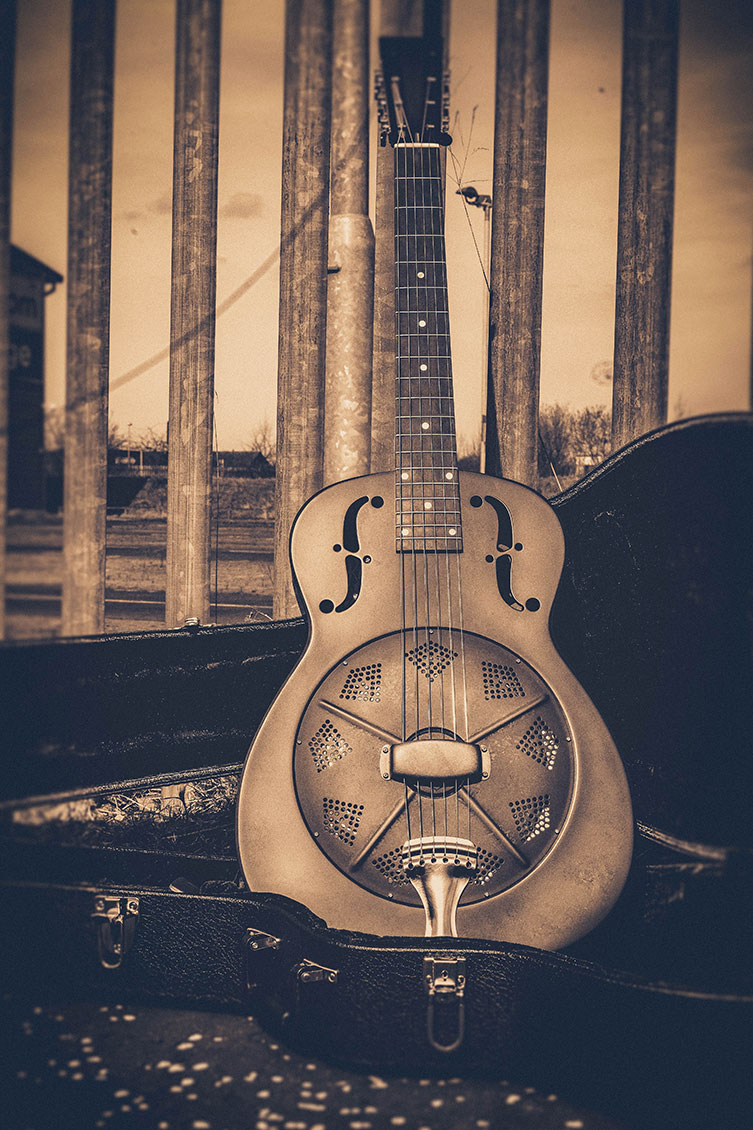
Final Thoughts
Blues has had a tremendous impact on the world of music: it gave birth to jazz, rock & roll, soul, R&B and even pop. It is our responsibility to educate ourselves - and you - about the roots of modern sound.
This piece has been a walk amongst the stars and it feels somewhat difficult to come back down to earth and carry on about our day as normal. After all, such extensive research into the lives of so many legendary, ridiculously talented blues artists takes you into that special place where you feel obliged to speak their names. We start appreciating the times we live in more, the fact we’ve been graced with so much stupendous music that shaped our personas growing up. Let’s not waste the effort these greatest blues artists put into the shape of modern music, and let’s grab our guitars today to play our favourite blues songs loud and proud.




